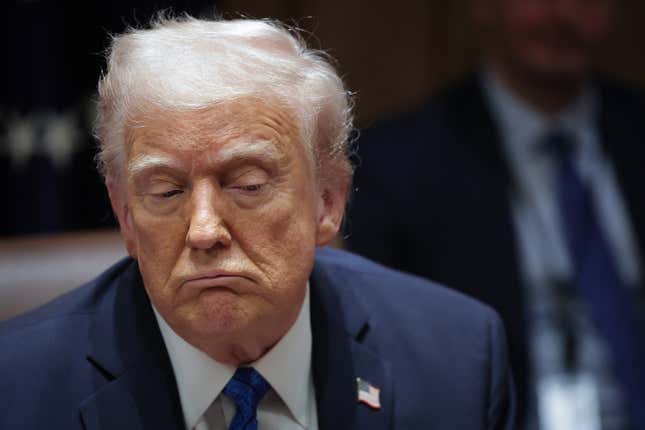
In his latest attempt to rid the country of diversity, equity, and inclusion— and as many Americans believe, even strip away Black history— President Donald Trump announced plans to target federal funding for the Smithsonian, forcing folks to question why he’s taken an interest in the National Museum of African American History and Culture (MAAHC) but not in similar museums like the U.S. Holocaust Memorial Museum or the Smithsonian National Museum of the American Indian, all of which receive federal funding.
In an executive order, Trump said the (MAAHC) located in Washington D.C. is “under the influence of a divisive, race-centered ideology.” Because of this, Trump wants to end funding to the African American Museum as well as other Smithsonian museums honoring the expansive history of the nation. This means the fate of Black history and culture is up in the air.
Will He Keep the Same Energy for Others?
Opened in 2016, the MAAHC is dedicated to telling the full story of the Black American experience, which is why Trump says the institution is a threat. But while he has called out the MAAHC and the Smithsonian American Women’s History Museum by name for so-called “radical” narratives, Trump hasn’t mentioned other museums who would be up for questioning.
This begs the question...Will Trump keep the same energy and go after other museums supporting diversity? Or does he only have the smoke for Black folks and women? The president hasn’t yet dared question the fate of the Museum of Jewish Heritage – A Living Memorial to the Holocaust in New York, the National Museum of the American Indian or the Museum of the American Latino. But that doesn’t mean there’s no plans to add them to his hit list.
What’s the Motivation?
“The National Museum of African American History and Culture has proclaimed that ‘hard work,’ ‘individualism,’ and ‘the nuclear family’ are aspects of ‘White culture,’ the order reads. Targeting its federal funding is just another example of the president trying to rid the nation of DEI.
After banning DEI at the federal level, forcing agencies to close down their diversity offices, many accused the president of trying to “re-white” history, and after recent attacks on the Tuskegee Airmen and Jackie Robinson. “It is a five-alarm fire for public history, science and education in America,” Samuel Redman, a history professor at the University of Massachusetts Amherst, told the Guardian.
The Smithsonian database is also a notable, trusted and well-referenced global system, making Trump’s attempt to have his hands in the entity even more nefarious. “While the Smithsonian has faced crisis moments in the past, it has not been directly attacked in quite this way by the executive branch in its long history,” Redman continued. “It’s troubling and quite scary.”
What Are the Consequences?
When you target the Smithsonian, a global organization operating in a public-private partnership, you can expect immediate backlash. So far, several politicians, historians, and activists have denounced the administration’s attempt to regulate the Smithsonian.
Vice President JD Vance and Chief Justice John G. Roberts Jr. are already members of the Smithsonian board by law, but it’s important to note the executive branch has no authority over the institution. The Smithsonian gets most of its funding from private partnerships, but the federal government does allocate some money in the budget, according to its website.
In his order, Trump charged Vance “to seek the appointment of citizen members to the Smithsonian Board of Regents committed to advancing the policy of this order.” Without the Smithsonian, which provides nearly two dozen museums free to the public, Americans and tourists won’t have access to accurate accounts of history. But maybe that’s the real plan for Trump’s America.

